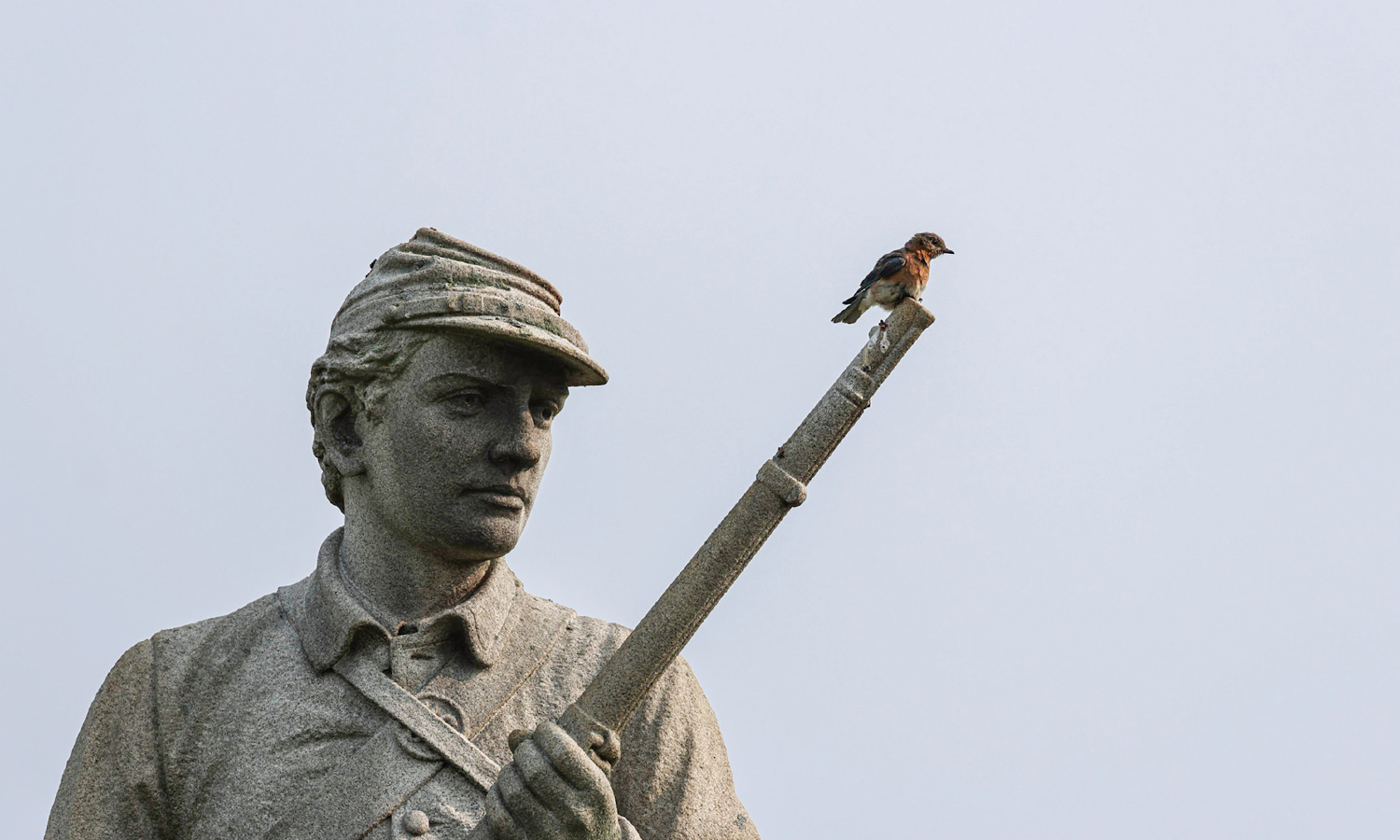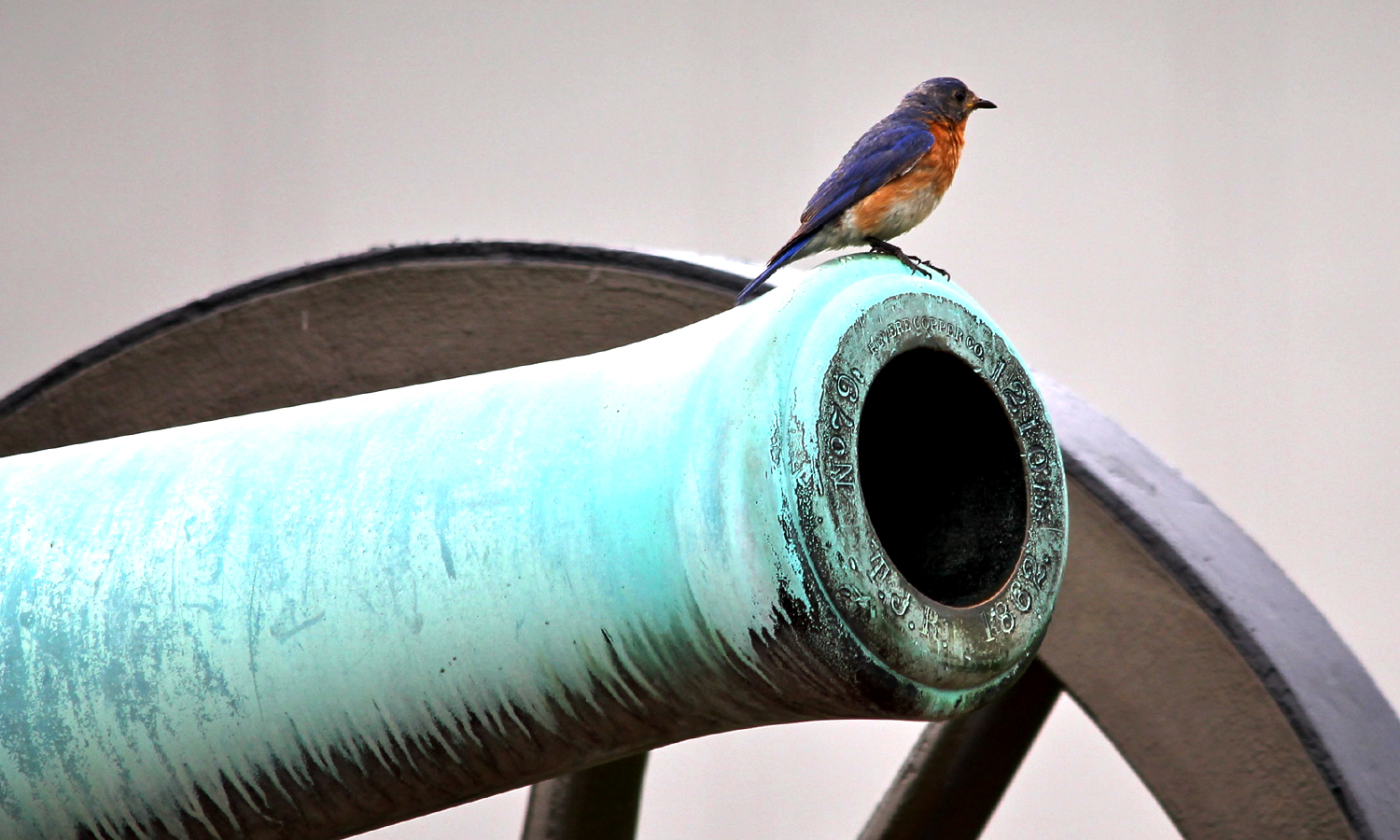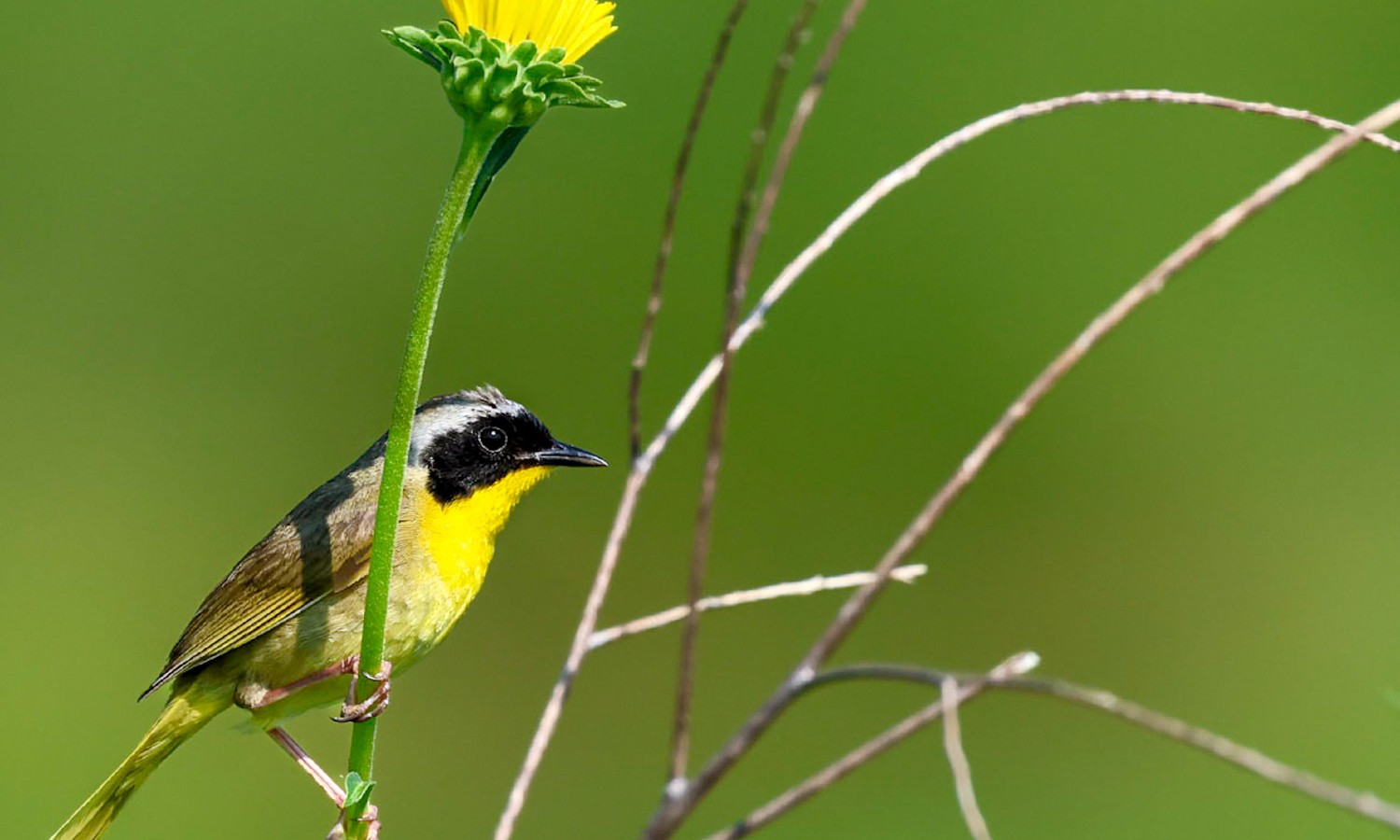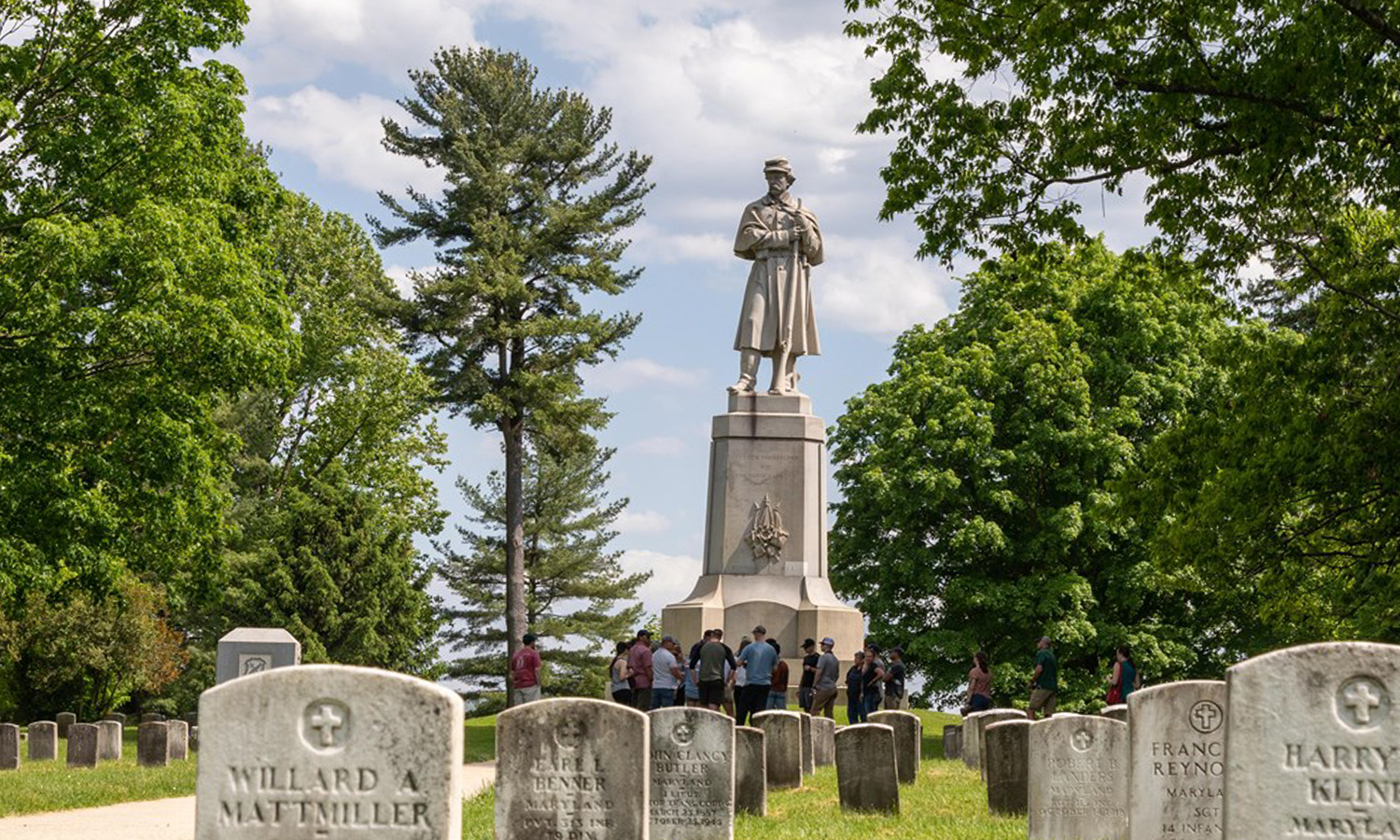Fantastic Birding at Antietam National Battlefield

The 3,000-acre Antietam National Battlefield, a National Park Service-protected area in Sharpsburg, has become a lifeline for many bird species, including dwindling grassland birds like the Eastern Meadowlark and Grasshopper Sparrow.
The Eastern Bluebird has also found a welcoming home on the battlefield thanks to bird conservationists Mark and Jean Raabe, who partnered with the National Park Service in 1979 to create and maintain an Antietam bluebird trail, a series of nest boxes placed in an area with bluebird-friendly habitat. The trail, which grew to more than 100 boxes, still exists today. More than 10,000 birds have successfully fledged on the battlefield because of their efforts.

The National Park Service has documented more than 130 different types of birds on Antietam National Battlefield, and eBird, an online database of bird observations managed by the Cornell Lab of Ornithology, lists Antietam as a Washington County hotspot with over 160 observed bird species.
What does all of this mean? Antietam is a great place to go birding! Even someone who is content to casually birdwatch will likely be rewarded with sightings.
Grab your binoculars. We’re going birding!
When to Go Birding at Antietam National Battlefield
Antietam National Battlefield is closed to the public on Thanksgiving, December 25, and January 1 but is open every other day of the year until 20 minutes after sunset. You can find plenty of birds no matter the season. Many birds are year-round residents, including the Bald Eagle, Wild Turkey, Red-tailed Hawk, Northern Cardinal, Eastern Bluebird, and Red-bellied Woodpecker.

Spring and summer months bring a lot of nesting birds to the battlefield, including Tree Swallows, Cliff Swallows, Eastern Meadowlarks, Indigo Buntings, Common Yellowthroats, Prothonotary Warblers, and Blue Grosbeaks. The fall and winter months are great for seeing Great Blue Herons, Winter Wrens, Yellow-bellied Sapsuckers, Dark-eyed Juncos, White-throated Sparrows, and Horned Larks.
Where to Go Birding at Antietam National Battlefield
One of the best ways to get around the battlefield and see birds is by taking the 8.5-mile self-guided Antietam National Battlefield Driving Tour. This auto tour goes past major historical stops. In the summer, it goes past the bluebird trail, giving visitors a front-row seat to nesting Tree Swallows and Eastern Bluebirds. An additional benefit is that it allows good views of open fields, a preferred habitat for many Antietam birds.

Another option is to get out of the car and walk on the Antietam National Battlefield trails. Many of these trails lead to battlefield monuments, farms, artillery exhibits, and landscapes inaccessible by vehicles. They also go straight through bird-friendly habitats, including grassy fields, meadows, hedgerows, and woodlands. Two popular birding trails are the Final Attack Trail, which goes past fields and shrubby areas, and the Snavely Ford Trail, which goes through wooded areas and along Antietam Creek. You can read a description of each trail and view an Antietam trail map here.
Exploring the History of the Battlefield
Visiting battlefields is an excellent way to explore the past, honor the people who fought for the future, and better understand American history and our shared heritage. Antietam National Battlefield offers many opportunities to learn about the battle and the families who lived in Sharpsburg when the action occurred.

Caption: The Private Soldier Monument at Antietam National Cemetery
Some of these opportunities include interactive exhibits at the newly rehabilitated visitor’s center, wayside information signs, daily ranger talks, weekend tours, and monthly living history tours.
While birding the battlefield, consider taking some time to explore the history. You’ll also find several other nearby Civil War sites in Maryland.
Feature Photo: An Eastern Bluebird rests on a statue at Antietam National Battlefield. Photo Credit: Anna Champagne
About the Author
Anna Champagne is an outdoor writer, photographer, and traveler. She can often be found gardening and birdwatching in her backyard and exploring creeks, trails, marshes, and parks with her husband. Anna lives in Frederick County, Maryland. You can learn more about her on her website www.champagneoutdoors.com.














